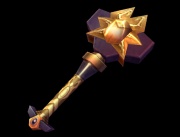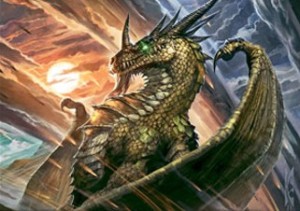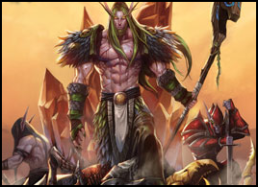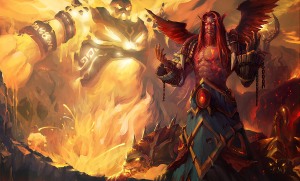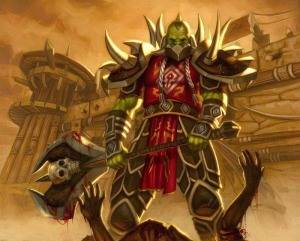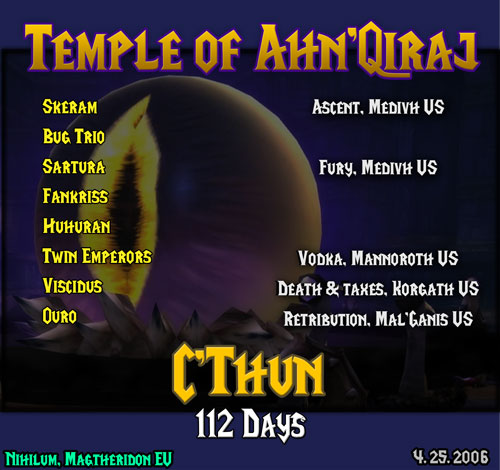As usual, an article over at Gamasutra had me pondering what kind of games Blizzard really makes. The more I thought on it, the more I realized their games are pretty low on gameplay with 1.5 exceptions: Starcraft (1) and raiding in World of Warcraft (.5).
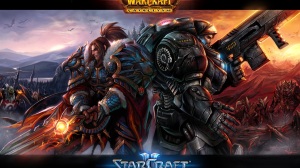 Before I stir the ire of Blizzard fans more hardcore than me, I just want to make clear that I think they have a very unique style due to their powerful talents. As I see it, their two strongest suits are code execution and art. They’re one of the best developers in the industry for creating powerful, easy to use tools which can make powerful, complex, and highly interactive games. Their games feel awesome to all who touch them and their art inspires. I wouldn’t call Blizzard masters of game design though. In fact, I don’t think think their game design is all that interesting or good. But from a technical standpoint, they clearly know their stuff and understand their players. It’s clear they’re numbers guys who have a passion for art and games.
Before I stir the ire of Blizzard fans more hardcore than me, I just want to make clear that I think they have a very unique style due to their powerful talents. As I see it, their two strongest suits are code execution and art. They’re one of the best developers in the industry for creating powerful, easy to use tools which can make powerful, complex, and highly interactive games. Their games feel awesome to all who touch them and their art inspires. I wouldn’t call Blizzard masters of game design though. In fact, I don’t think think their game design is all that interesting or good. But from a technical standpoint, they clearly know their stuff and understand their players. It’s clear they’re numbers guys who have a passion for art and games.
If Blizzard crafted tools for other game companies, we’d have the most innovative and exciting games the world has ever seen. One need only look at the RTS and MOBA genres to know how amazing Blizzard tools are for gamers and amateur developers. In the hands of professional developers who excel at game design …can you imagine?!?
Powerful Engines, Psuedo-Games
There’s one game, in my opinion, that Blizzard showed their talent for game design and that was Warcraft, which has given us Starcraft, the most well designed game in their current line-up.

Disclaimer: There are no Space Marine Kitties in Starcraft II.
Starcraft is pure game. There’s no mindless grinding involved. From the moment you turn it on until the moment you shut it off, you’re playing a game. To successfully get through a round of Starcraft, you have to completely engage with it. The word gameplay doesn’t mean “to play a game”. It describes how the player engages with game mechanics, and more importantly, how those things create a complete game experience. This game stands out among the other Blizzard titles as delivering actual gameplay.
Take Soccer (Football). Soccer is a game. The soccer ball is not a game. It’s just equipment which, when given mechanics and set within a ruleset, helps create a game. So handing someone a ball and telling them to enjoy the game makes no sense. Handing someone Diablo and telling them to “enjoy the game” is similar in my experience.There are elements there to play with, but nothing that feels like there’s a game already going on. The game just gives me a set of features (balls) and then tells me to go hog wild with them. I might decide that the object of the game is to find the best yellow loot. I might decide I want all of the achievements. I might decide to chase astronomical paragon levels. Their presence doesn’t constitute a game or create gameplay. If we zoom out to the big picture though we see this is one of Blizzard’s hallmarks: they give the player the tools to make their own game. And that’s had crazy awesome consequences for the game industry at large. It just doesn’t make for excellent gameplay itself.
Starcraft gameplay is brilliantly designed and it owes it’s gameplay to none other than the original Warcraft. So it’s ironic that World of Warcraft has so little gameplay by comparison.We’ve all said it, WoW is a theme park and/or a job depending on who you ask. It has many balls, but I’ve already established that balls themselves aren’t games. The one thing about WoW that’s absolutely a game is raiding and it has it’s own gameplay. Now one could argue that the elements that build up to raiding make up the gameplay, and you’d have a point. I’ll talk about that point a bit later so hang on to that idea. All I want to say here is that WoW has billed itself as more than a raiding game, especially with the addition of competitive PvP, but because those are only balls they feel hollow.
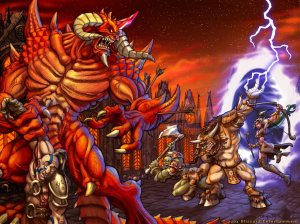
Wait for it …this game is coming.
What Blizzard understood about their MMO when they made it was that it needed to be a virtual world. They largely succeeded there. This is why Blizzcon has become such a cultural phenomenon. People play because they know the characters, know their stories and can share a virtual space with them. To simply be in Azeroth is enough for most people. On a slight tangent, I think this may also have something to do with the great disappointment even hardcore fans have of the games’ failure to implement things like player housing, community building tools (like a better LFD) and improved crafting for a player driven economy (people want to be there). But that’s another article for another day.
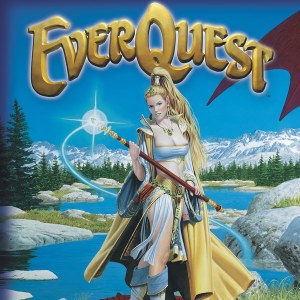
The original modern MMO.
Diablo has none of these things going for it, when you think about it. More interesting is that when you get right down to it, World of Warcraft is a blend of Diablo and Everquest. What the truly loved about Everquest was raiding and when they sat down to make WoW, this was the cornerstone of the gameplay, the driver of all the mechanics. Raiding is a game on it’s own, but MMOs need much more than this because they’re virtual worlds. So they added battlegrounds and arenas and millions of quests. Every feature is tuned to build a character up for dungeon runs. These are support for the raid game. These are the answer to “what will players do when not raiding?”.
The endless grind of Diablo was set within the Warcraft universe and wrapped around Everquest raiding to bring us the World of Warcraft we know today. To get to the actual gameplay (raiding), one must grind hours, days, months and years on their character(s) and outlast the glacial content patche releases. If we could measure the amount of game at level 1 and compare it to the amount of game at level 90, we’d see virtually zero game at earlier levels and total game at the max level. If you’ve played WoW before, you probably know what I mean by this. It’s tough to describe.
So now I’m back to the initial question that drove me to write this: what’s the value of Blizzard’s game design? Why are their games so low on gameplay and so high on grind?
Blizzard seems to excell at developing systems that thrive on player dedication and compulsion. Fans will walk through fire for the company, and they know it so they expect us to endure the early parts of their games knowing that we’re loyal enough to tough it out until the end, where a great reward awaits us. And by the time you’re at the end you’ve invested so much time and energy that you’re far more likely to stick around just to justify it all. It’s very interesting to observe as a fan. Why did I sink so many hours into Diablo 2 back in the day?
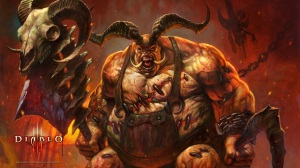 Recently I played a round of D3 with Talarian over at Gamer by Design and it sunk in just how casual my playing of Diablo had become over the years. I’m not their target gamer any more, but I used to be. Talarian had 115 paragon levels and I had 14. In fact, I wasn’t even max level when we started (I was level 68) and this was my highest character. In Diablo 2, I had 3 max level characters (99), ladder characters, hardcore characters …and leveling back then was severe. SEVERE! If you saw a level 99 the only proper response was awe, especially if they were hardcore characters. Achieving that required a time commitment that wasn’t matched by the actual gameplay – players did it to compete with other players. Grind the same mobs and dungeons over and over and over and over …literally an infinite grind. The game was the same at level 1 as it was at 99 (there was nothing different about the gameplay at any given level). The only “progression” was your level going up, but what you did never changed. It’s quite literally the thing we do from 9 to 5. Work. Work is only a game to the extent that we “compete” with co-workers to earn pay and promotions. So why do we call Diablo a game, but not our jobs?
Recently I played a round of D3 with Talarian over at Gamer by Design and it sunk in just how casual my playing of Diablo had become over the years. I’m not their target gamer any more, but I used to be. Talarian had 115 paragon levels and I had 14. In fact, I wasn’t even max level when we started (I was level 68) and this was my highest character. In Diablo 2, I had 3 max level characters (99), ladder characters, hardcore characters …and leveling back then was severe. SEVERE! If you saw a level 99 the only proper response was awe, especially if they were hardcore characters. Achieving that required a time commitment that wasn’t matched by the actual gameplay – players did it to compete with other players. Grind the same mobs and dungeons over and over and over and over …literally an infinite grind. The game was the same at level 1 as it was at 99 (there was nothing different about the gameplay at any given level). The only “progression” was your level going up, but what you did never changed. It’s quite literally the thing we do from 9 to 5. Work. Work is only a game to the extent that we “compete” with co-workers to earn pay and promotions. So why do we call Diablo a game, but not our jobs?
The Secret of Blizz Gameplay
This isn’t to say I didn’t enjoy those hours because I still do. There’s something cathartic about playing a Blizzard game that I cannot deny. In that catharsis we can begin to understand the value of Blizzard “games”. In Diablo there were other things that made this enjoyable, because I and millions of others definitely had fun …but it wasn’t the gameplay itself that delivered it for me. In fact, I know this must be the case because in single player mode the highest level I’d achieved was level 24. If the gameplay was so gripping and fun and interesting, I would have played single player just as much. I didn’t.
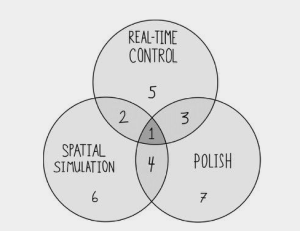
The mechanics of game kinaesthetics as described by Steve Swink in the book Game Feel. Blizzard games are located in area 1.
The one thing that I think keeps players playing is that the game feels good. And I mean really feel as in engages our physical senses. Blizzard is one of the best in the industry when it comes to making the game controls an extension of your body. Smashing a demon head feels visceral. Whirlwinding feels like I’m spinning in my chair. The “click button” to “satisfying response” ratio is so tight that it’s really hard not to enjoy the way the game feels. Players like me just enjoy running around killing things because of how incredible it feels. And in that, Diablo 3 is a major success. I understand what they mean when they say that they achieved the goal of making it fun to kill things in game. Can’t take that away from them.
This is equally true of World of Warcraft. Watching my priest do that smooth, subtle wobbling from side to side while casting a spell feels GOOD. Jumping in the air while letting an arrow fly from my hunter feels GREAT. The real crime here in Blizzards case is that they don’t hold industry workshops to teach other developers this fine art. I think this is the secret to their game development success and the reason that millions enjoy playing. Their games have a way of pulling you inside, giving you a feel of in-game presence.That’s powerful.
And with that in mind, I’m amazed at how little gameplay is actually in Blizzard games. Despite that, they deliver powerful and valuable experiences that fans can’t let go of. When Blizz sets out to deliver gameplay, we get Starcraft or raiding. Otherwise we get Diablo and theme parks, this digital contraption driven by nothing but player compulsion (grinding like it’s our job) and keen kinaesthetics.
Yet I don’t think this was always the case. If you watch their games evolve, they appear to have progressively less gameplay from sequel to sequel. I call this process Distillation (“dumbing down”), where the devs attempt to streamline features to make them easier, more fluent for the player. But I think what we end up with is a soulless, feel-good “game”. And I think that has a value all it’s own .
Scree Tags: #blizzard #kinaesthetics #gamedesign

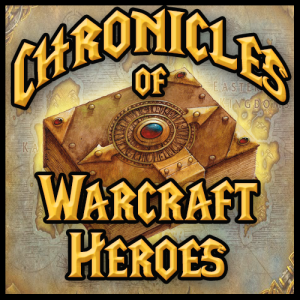 It was 7pm and time to login. Every night. The War Effort was already underway and my guild and I decided to do some dungeon runs, to put in our work for the server. Those were the days we dreamed of being a “top” guild, another awesome piece of our rich server community of awesome guilds. Even though we weren’t likely to open the gates, we would be part of the effort to get it done, no matter how small.
It was 7pm and time to login. Every night. The War Effort was already underway and my guild and I decided to do some dungeon runs, to put in our work for the server. Those were the days we dreamed of being a “top” guild, another awesome piece of our rich server community of awesome guilds. Even though we weren’t likely to open the gates, we would be part of the effort to get it done, no matter how small.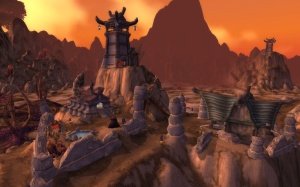 Back then
Back then 